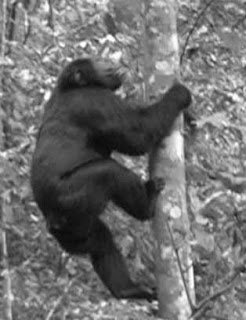Friday, August 28, 2009
Ancestors of Modern Day Humans Came Down From the Trees to Become Bipedal
In the Aug. 10th 2009 issue of the journal Proceedings of the National Academy of Sciences, researchers have postulated that "early humans walked on their knuckles before evolving the ability to walk upright, but a new study suggests they may have bypassed that step"
Researchers have developed their ideas from their detailed examination of "the wrist bones of several primate species, and found that humans more likely evolved from a tree-climbing ancestor, rather than a knuckle-walking one. The new model reignites a longstanding debate about the origin of walking on two legs, or bipedalism, in humans."
Scientists believe that: "Since humans' closest living relatives, the African apes, often move around on knuckles and legs, many experts thought human ancestors may have also employed knuckle-walking. But another camp of scientists traces humans' two-legged walking to earlier tree-climbing, a mode of locomotion that is used by all living apes."
Analysis provided by "evolutionary anthropologist Tracy Kivell of Duke University compared juvenile and adult wrist bones of chimps and bonobos, our closest living primate kin, with those of gorillas."
Dr. Kivell "found two key bone features associated with knuckle-walking in 96 percent of adult chimpanzees and 76 percent of bonobos, but in only 6 percent of the gorilla specimens she studied."
Researchers have suggested that "one explanation for the absence of these features in gorillas is that they knuckle-walk in a fundamentally different way from chimps and bonobos. Gorillas stride with their arms and wrists extended straight down, while chimps and bonobos walk more flexibly with their wrists bent."
"We sat down together and asked, 'What are the differences between them?'" said co-researcher Daniel Schmitt. "The answer," Schmitt explained, is "that chimps and bonobos spend a lot of time in the trees. And gorillas do not."
Researchers "Kivell and Schmitt think this suggests that knuckle walking evolved independently in the two African ape lineages. The researchers also think that some features of the hand and wrist found in the human fossil record that have traditionally been treated as indicators of knuckle-walking behavior are more likely to be related to tree climbing."
The evidence suggests that the ancestors of humans climbed in trees, and then eventually moved to the ground and began walking upright, the researchers said."
"We have the most robust data I've ever seen on this topic," Schmitt said. "This model should cause everyone to re-evaluate what they've said before."
"There are no fossils from the time of this transition, which likely occurred about seven million years ago, Kivell and Schmitt said."
Labels:
bipedalism,
early humans,
evolution,
knuckle walking,
primates,
walk upright
Subscribe to:
Post Comments (Atom)




No comments:
Post a Comment